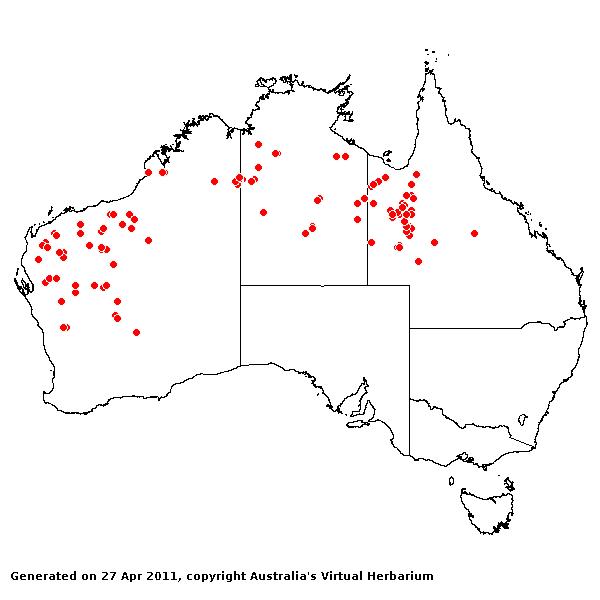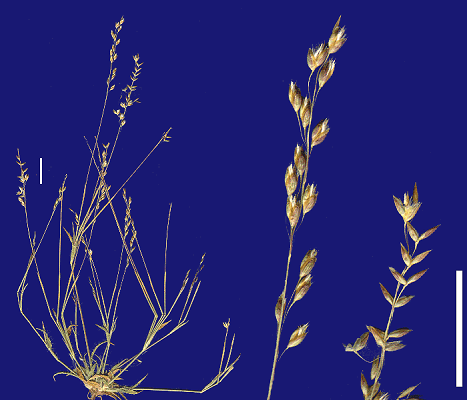E. pulchella subsp. dominii
(Hartley) Lazarides. Austral. Syst. Bot. 8(3): 410, f. 26I, 30G-I
(1995).
Classification.
Basionym and/or Replacement Name: Eriachne tuberculata Domin J. Linn.
Soc., Bot. 41: 280, t. 11, f. 14–17 (1912), non Nees (1841).
Type of Basionym or
Protologue Information: HT: Clement s.n., Australia: Western
Australia: Northern Province: between the Ashburton and Yule Rivers (K).
Recent synonyms:
Eriachne dominii Hartley.
Australian
Distribution: Western Australia, Northern Territory, Queensland.
Notes. Plants
of this subspecies consistently differ from those of the typical subspecies
only by their looser panicles and smaller spikelets. In habit, they tend to be
cuneate in outline due to their narrow compact base and the profuse production
of fastigiately bunched spikelet-bearing branches at their upper nodes. In contrast,
plants of subspecies pulchella tend to spread from ground level and the culms
are simple or sparsely branched. Also, the caryopsis is usually obovate or
elliptic and obtuse rather than cuneate and truncate, which is the common
condition in subspecies pulchella. In distribution, subspecies pulchella is
predominantly arid, while subspecies dominii is semi-arid and higher rainfall.
W Qld, N.T. and W.A.
between 16ºS and 24ºS. Common in skeletal often pebbly or stony soils on
hillslopes, outcrops and ridges of sandstone, quartzite and laterite; recorded
also from sandplains, reddish-brown loams and from disturbed ground. Flowers
and fruits chiefly Apr.-July (mid-autumn to mid-winter), also Nov.
(late-spring).


